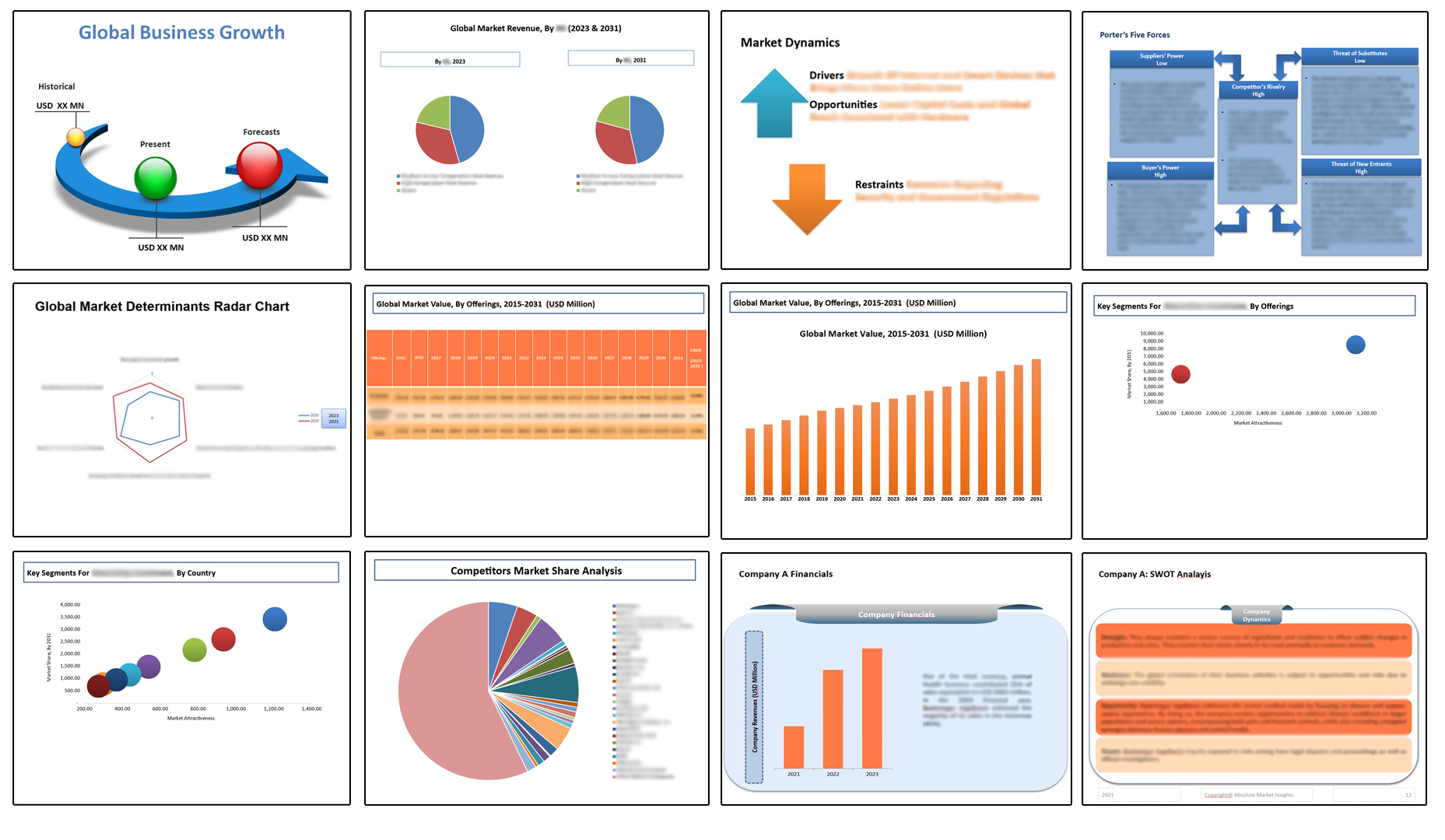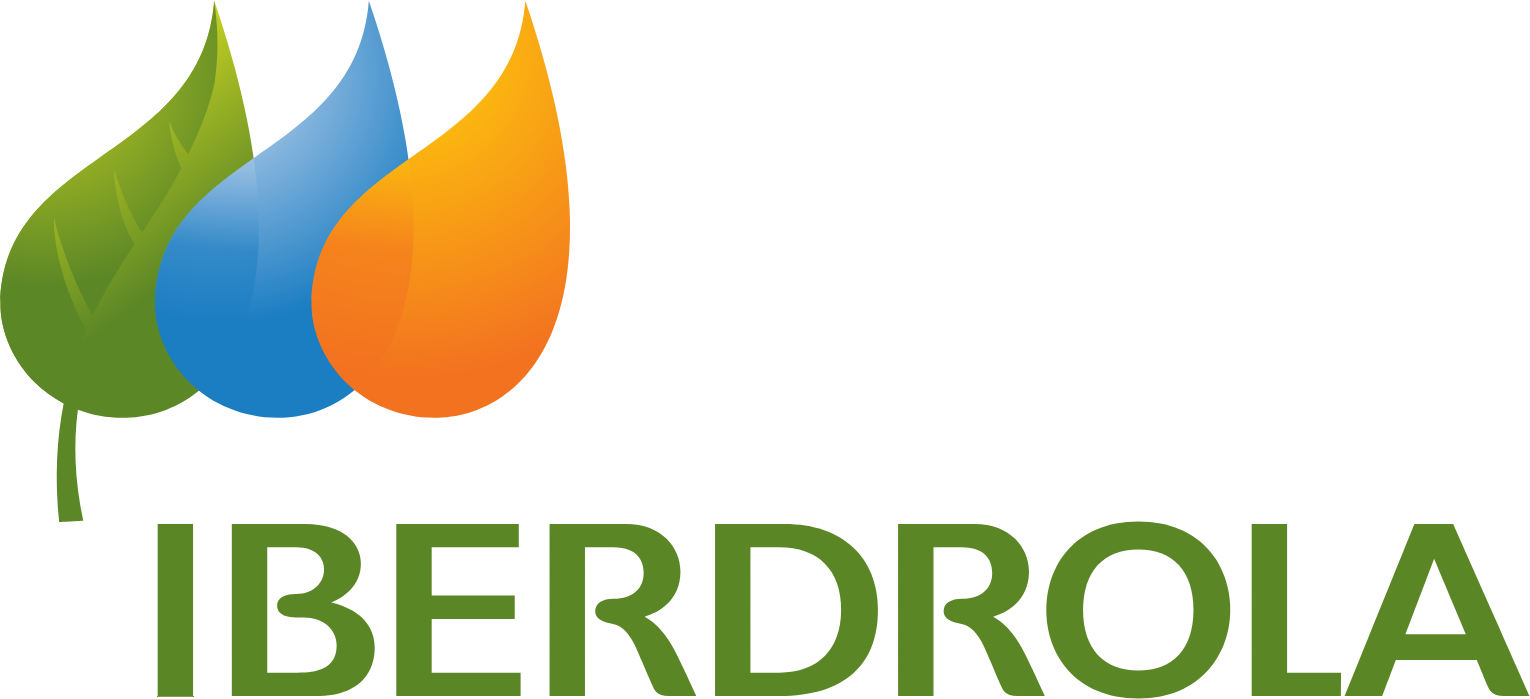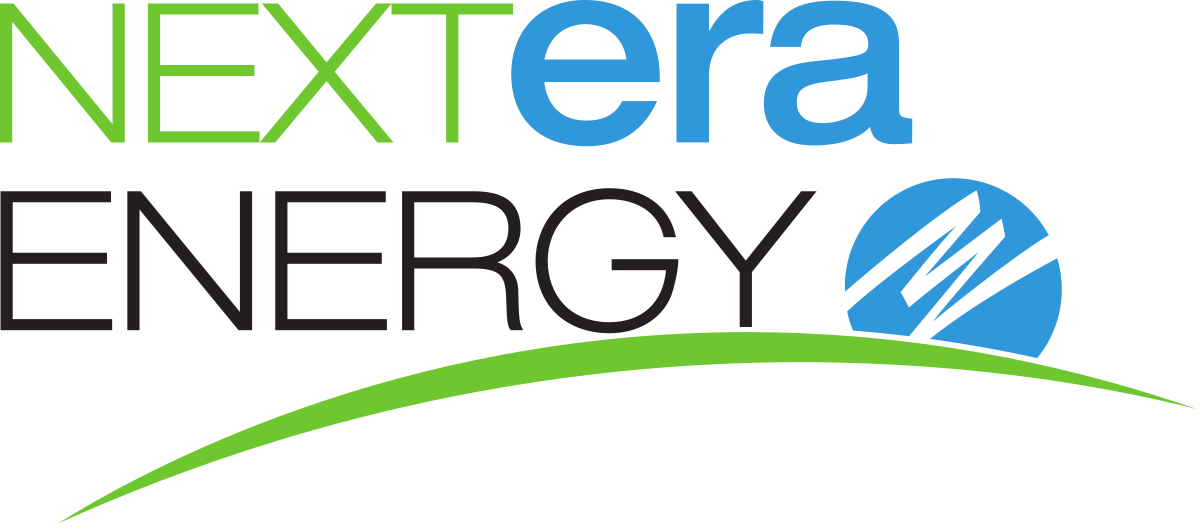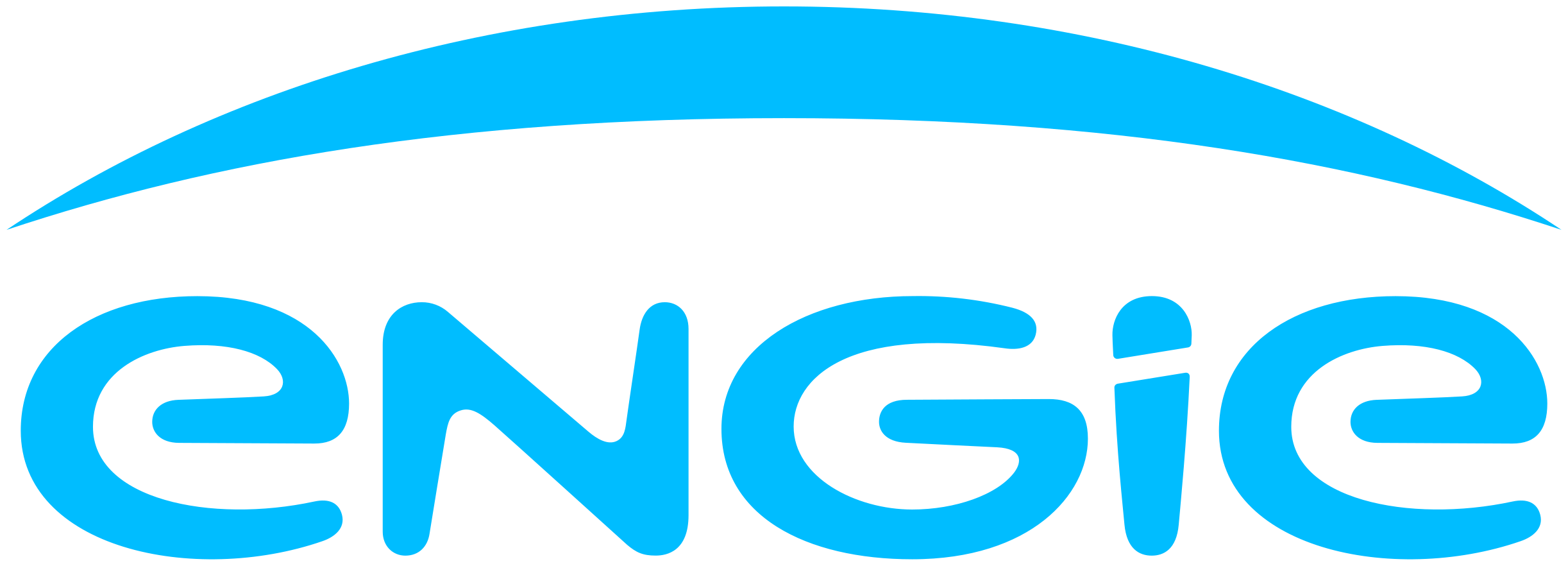Coal Gasification is a process where coal is converted into synthetic gas (syngas), primarily composed of hydrogen (H2) and carbon monoxide (CO), by reacting it with oxygen and steam at high temperatures. Syngas can be used for electricity generation, chemical production, and as a feedstock for various industrial processes. In terms of revenue, the global coal gasification market was worth US$ 190.25 Bn in 2022, anticipated to witness CAGR of 11.2% during 2023 – 2031.
Trends in the Global Coal Gasification Market
- Environmental sustainability is a paramount driver in the coal gasification market. As global concerns over carbon emissions and climate change intensify, there is a growing focus on cleaner coal utilization technologies. Gasification is gaining prominence for its ability to capture and store carbon dioxide (CO2) emissions, reducing the carbon footprint of coal-based energy and chemical production. The current trend sees investments in advanced gasification processes that incorporate carbon capture and utilization (CCU) technologies to mitigate environmental impacts, aligning with global efforts to achieve net-zero emissions.
- Another significant trend driving the coal gasification market is the integration of gasification into the emerging hydrogen economy. Hydrogen is gaining traction as a clean energy carrier, and gasification plays a pivotal role in hydrogen production. Presently, there is a surge in projects aiming to produce green hydrogen by gasifying coal with renewable energy sources. This trend aligns with the global push towards decarbonizing energy systems and utilizing hydrogen as a versatile, low-emission energy vector, positioning coal gasification as a crucial player in the evolving energy landscape.
Global Coal Gasification Market Revenue & Forecast, (US$ Million), 2015 – 2031

Fluidized bed segment has gained popularity in recent years and is anticipated to be the fastest growing segment in the global coal gasification market during the forecast period. This technology has witnessed substantial growth, with a notable increase in the number of fluidized bed gasifiers deployed worldwide as of 2022. Its appeal lies in its ability to gasify a variety of feedstocks, including coal, biomass, and waste materials, making it attractive for waste-to-energy and renewable energy applications. Moreover, fluidized bed gasifiers are recognized for their efficient carbon capture capabilities, contributing to reduced greenhouse gas emissions. This environmentally friendly profile positions them at the forefront of the evolving coal gasification landscape.
 Electricity generation application segment had the highest share in the global coal gasification market in 2022. The dominance is driven by its role in producing cleaner and more efficient electricity. Coal gasification enables the conversion of coal into syngas, which can be used to generate electricity with reduced emissions compared to traditional coal combustion. This segment’s significance is underscored by the global demand for reliable and sustainable power sources. Notably, as of 2022, coal gasification was utilized in numerous integrated gasification combined cycle (IGCC) power plants worldwide, reflecting its practical application in electricity generation. This dominance aligns with the ongoing transition towards cleaner energy solutions while utilizing coal resources efficiently.
Electricity generation application segment had the highest share in the global coal gasification market in 2022. The dominance is driven by its role in producing cleaner and more efficient electricity. Coal gasification enables the conversion of coal into syngas, which can be used to generate electricity with reduced emissions compared to traditional coal combustion. This segment’s significance is underscored by the global demand for reliable and sustainable power sources. Notably, as of 2022, coal gasification was utilized in numerous integrated gasification combined cycle (IGCC) power plants worldwide, reflecting its practical application in electricity generation. This dominance aligns with the ongoing transition towards cleaner energy solutions while utilizing coal resources efficiently.

Middle East and Africa is expected to witness the highest growth rate in the coal gasification market during the forecast period. This growth is primarily attributed to the region’s increasing focus on diversifying energy sources and utilizing its vast coal reserves more efficiently. As of 2022, several countries in the Middle East and Africa, including South Africa, have initiated coal gasification projects to produce cleaner syngas for power generation and chemical production. This surge is driven by the need to address energy security, support economic growth, and reduce greenhouse gas emissions, positioning coal gasification as a transformative technology in the region’s energy transition and economic development efforts.
Report Coverage & Snapshot

Competitive Industry Landscape: Global Coal Gasification Market:
- Air Liquide Engineering & Construction
- Air Products and Chemicals, Inc.
- ANDRITZ
- Dakota Gasification Company
- McDermott
- MITSUBISHI HEAVY INDUSTRIES, LTD.
- Sasol
- SEDIN Engineering Co., Ltd.
- Shell International B.V.
- thyssenkrupp Uhde GmbH
- Other Industry Participants
Global Coal Gasification Market Summary
| Report Specifications |
Details |
| Market Revenue in 2022 |
US$ 190.25 Bn |
| Market Size Forecast by 2031 |
US$ 544.2 Bn |
| Growth Rate (CAGR) |
11.2% |
| Historic Data |
2015 – 2021 |
| Base Year for Estimation |
2022 |
| Forecast Period |
2023 – 2031 |
| Report Inclusions |
Market Size & Estimates, Market Dynamics, Competitive Scenario, Trends, Growth Factors, Market Determinants, Key Investment Segmentation, Product/Service/Solutions Benchmarking |
| Segments Covered |
By Gasifier, By Application |
| Regions Covered |
North America, Europe, Asia Pacific, Middle East & Africa, Latin America |
| Countries Covered |
U.S., Canada, Mexico, Rest of North America, France, The UK, Spain, Germany, Italy, Nordic Countries (Denmark, Finland, Iceland, Sweden, Norway), Benelux Union (Belgium, The Netherlands, Luxembourg), Rest of Europe, China, Japan, India, New Zealand, Australia, South Korea, Southeast Asia (Indonesia, Thailand, Malaysia, Singapore, Rest of Southeast Asia), Rest of Asia Pacific, Saudi Arabia, UAE, Egypt, Kuwait, South Africa, Rest of Middle East & Africa, Brazil, Argentina, Rest of Latin America |
| Key Players |
Air Liquide Engineering & Construction, Air Products and Chemicals, Inc., ANDRITZ, Dakota Gasification Company, McDermott, MITSUBISHI HEAVY INDUSTRIES, LTD., Sasol, SEDIN Engineering Co., Ltd., Shell International B.V., thyssenkrupp Uhde GmbH, Other Industry Participants |
| Customization Scope |
Customization allows for the inclusion/modification of content pertaining to geographical regions, countries, and specific market segments. |
| Pricing & Procurement Options |
Explore purchase options tailored to your specific research requirements |
| Contact Details |
Consult With Our Expert
Japan (Toll-Free): +81 663-386-8111
South Korea (Toll-Free): +82-808- 703-126
Saudi Arabia (Toll-Free): +966 800-850-1643
United Kingdom: +44 753-710-5080
United States: +1 302-232-5106
E-mail: askanexpert@thenicheresearch.com
|
Global Coal Gasification Market
By Gasifier
- Fixed Bed
- Fluidized Bed
- Entrained Flow
By Application
- Fertilizers
- Electricity Generation
- Chemicals
- Hydrogen Generation
- Steel Production
- Others
By Region
- North America (U.S., Canada, Mexico, Rest of North America)
- Europe (France, The UK, Spain, Germany, Italy, Nordic Countries (Denmark, Finland, Iceland, Sweden, Norway), Benelux Union (Belgium, The Netherlands, Luxembourg), Rest of Europe)
- Asia Pacific (China, Japan, India, New Zealand, Australia, South Korea, Southeast Asia (Indonesia, Thailand, Malaysia, Singapore, Rest of Southeast Asia), Rest of Asia Pacific)
- Middle East & Africa (Saudi Arabia, UAE, Egypt, Kuwait, South Africa, Rest of Middle East & Africa)
- Latin America (Brazil, Argentina, Rest of Latin America)
Table of Contents
.
1.Market Scope
1.2.Years Considered
1.2.1.Historic Years: 2015 – 2021
1.2.3.Forecast Years: 2023 – 2031
3.Research Methodology
3.1.Primary Research
3.1.1.Research Questionnaire
3.1.2.Global Percentage Breakdown
3.1.3.Primary Interviews: Key Opinion Leaders (KOLs)
3.3.Market Size Estimates
3.4.Data Triangulation Methodology
4.Recommendations and Insights from TNR’s Perspective**
5.Holistic Overview of Coal Gasification Market
6.Market Synopsis: Coal Gasification Market
7.Coal Gasification Market Analysis: Qualitative Perspective
7.1.Introduction
7.1.2.Industry Development
7.3.Trends in Coal Gasification Market
7.4.Market Determinants Radar Chart
7.5.Macro-Economic and Micro-Economic Indicators: Coal Gasification Market
7.6.Porter’s Five Force Analysis
7.7.Impact of Covid-19 on Coal Gasification Market
8.Global Coal Gasification Market Analysis and Forecasts, 2023 – 2031
8.1.Overview
8.1.1.Global Coal Gasification Market Revenue (US$ Mn)
8.2.Global Coal Gasification Market Revenue (US$ Mn) and Forecasts, By Gasifier
8.2.1.Fixed Bed
8.2.1.2.Market Estimation and Penetration, 2015 – 2022
8.2.1.3.Market Forecast, 2023 – 2031
8.2.1.4.Compound Annual Growth Rate (CAGR)
8.2.1.5.Regional Bifurcation
8.2.1.5.1.North America
8.2.1.5.1.1.Market Estimation, 2015 – 2022
8.2.1.5.1.2.Market Forecast, 2023 – 2031
8.2.1.5.2.Europe
8.2.1.5.2.1.Market Estimation, 2015 – 2022
8.2.1.5.2.2.Market Forecast, 2023 – 2031
8.2.1.5.3.Asia Pacific
8.2.1.5.3.1.Market Estimation, 2015 – 2022
8.2.1.5.3.2.Market Forecast, 2023 – 2031
8.2.1.5.4.Middle East and Africa
8.2.1.5.4.1.Market Estimation, 2015 – 2022
8.2.1.5.4.2.Market Forecast, 2023 – 2031
8.2.1.5.5.Latin America
8.2.1.5.5.1.Market Estimation, 2015 – 2022
8.2.1.5.5.2.Market Forecast, 2023 – 2031
8.2.2.Fluidized Bed
8.2.2.2.Market Estimation and Penetration, 2015 – 2022
8.2.2.3.Market Forecast, 2023 – 2031
8.2.2.4.Compound Annual Growth Rate (CAGR)
8.2.2.5.Regional Bifurcation
8.2.2.5.1.North America
8.2.2.5.1.1.Market Estimation, 2015 – 2022
8.2.2.5.1.2.Market Forecast, 2023 – 2031
8.2.2.5.2.Europe
8.2.2.5.2.1.Market Estimation, 2015 – 2022
8.2.2.5.2.2.Market Forecast, 2023 – 2031
8.2.2.5.3.Asia Pacific
8.2.2.5.3.1.Market Estimation, 2015 – 2022
8.2.2.5.3.2.Market Forecast, 2023 – 2031
8.2.2.5.4.Middle East and Africa
8.2.2.5.4.1.Market Estimation, 2015 – 2022
8.2.2.5.4.2.Market Forecast, 2023 – 2031
8.2.2.5.5.Latin America
8.2.2.5.5.1.Market Estimation, 2015 – 2022
8.2.2.5.5.2.Market Forecast, 2023 – 2031
8.2.3.Entrained Flow
8.2.3.2.Market Estimation and Penetration, 2015 – 2022
8.2.3.3.Market Forecast, 2023 – 2031
8.2.3.4.Compound Annual Growth Rate (CAGR)
8.2.3.5.Regional Bifurcation
8.2.3.5.1.North America
8.2.3.5.1.1.Market Estimation, 2015 – 2022
8.2.3.5.1.2.Market Forecast, 2023 – 2031
8.2.3.5.2.Europe
8.2.3.5.2.1.Market Estimation, 2015 – 2022
8.2.3.5.2.2.Market Forecast, 2023 – 2031
8.2.3.5.3.Asia Pacific
8.2.3.5.3.1.Market Estimation, 2015 – 2022
8.2.3.5.3.2.Market Forecast, 2023 – 2031
8.2.3.5.4.Middle East and Africa
8.2.3.5.4.1.Market Estimation, 2015 – 2022
8.2.3.5.4.2.Market Forecast, 2023 – 2031
8.2.3.5.5.Latin America
8.2.3.5.5.1.Market Estimation, 2015 – 2022
8.2.3.5.5.2.Market Forecast, 2023 – 2031
8.3.Key Segment for Channeling Investments
9.Global Coal Gasification Market Analysis and Forecasts, 2023 – 2031
9.2.Global Coal Gasification Market Revenue (US$ Mn) and Forecasts, By Application
9.2.1.Fertilizers
9.2.1.2.Market Estimation and Penetration, 2015 – 2022
9.2.1.3.Market Forecast, 2023 – 2031
9.2.1.4.Compound Annual Growth Rate (CAGR)
9.2.1.5.Regional Bifurcation
9.2.1.5.1.North America
9.2.1.5.1.1.Market Estimation, 2015 – 2022
9.2.1.5.1.2.Market Forecast, 2023 – 2031
9.2.1.5.2.Europe
9.2.1.5.2.1.Market Estimation, 2015 – 2022
9.2.1.5.2.2.Market Forecast, 2023 – 2031
9.2.1.5.3.Asia Pacific
9.2.1.5.3.1.Market Estimation, 2015 – 2022
9.2.1.5.3.2.Market Forecast, 2023 – 2031
9.2.1.5.4.Middle East and Africa
9.2.1.5.4.1.Market Estimation, 2015 – 2022
9.2.1.5.4.2.Market Forecast, 2023 – 2031
9.2.1.5.5.Latin America
9.2.1.5.5.1.Market Estimation, 2015 – 2022
9.2.1.5.5.2.Market Forecast, 2023 – 2031
9.2.2.Electricity Generation
9.2.2.2.Market Estimation and Penetration, 2015 – 2022
9.2.2.3.Market Forecast, 2023 – 2031
9.2.2.4.Compound Annual Growth Rate (CAGR)
9.2.2.5.Regional Bifurcation
9.2.2.5.1.North America
9.2.2.5.1.1.Market Estimation, 2015 – 2022
9.2.2.5.1.2.Market Forecast, 2023 – 2031
9.2.2.5.2.Europe
9.2.2.5.2.1.Market Estimation, 2015 – 2022
9.2.2.5.2.2.Market Forecast, 2023 – 2031
9.2.2.5.3.Asia Pacific
9.2.2.5.3.1.Market Estimation, 2015 – 2022
9.2.2.5.3.2.Market Forecast, 2023 – 2031
9.2.2.5.4.Middle East and Africa
9.2.2.5.4.1.Market Estimation, 2015 – 2022
9.2.2.5.4.2.Market Forecast, 2023 – 2031
9.2.2.5.5.Latin America
9.2.2.5.5.1.Market Estimation, 2015 – 2022
9.2.2.5.5.2.Market Forecast, 2023 – 2031
9.2.3.Chemicals
9.2.3.2.Market Estimation and Penetration, 2015 – 2022
9.2.3.3.Market Forecast, 2023 – 2031
9.2.3.4.Compound Annual Growth Rate (CAGR)
9.2.3.5.Regional Bifurcation
9.2.3.5.1.North America
9.2.3.5.1.1.Market Estimation, 2015 – 2022
9.2.3.5.1.2.Market Forecast, 2023 – 2031
9.2.3.5.2.Europe
9.2.3.5.2.1.Market Estimation, 2015 – 2022
9.2.3.5.2.2.Market Forecast, 2023 – 2031
9.2.3.5.3.Asia Pacific
9.2.3.5.3.1.Market Estimation, 2015 – 2022
9.2.3.5.3.2.Market Forecast, 2023 – 2031
9.2.3.5.4.Middle East and Africa
9.2.3.5.4.1.Market Estimation, 2015 – 2022
9.2.3.5.4.2.Market Forecast, 2023 – 2031
9.2.3.5.5.Latin America
9.2.3.5.5.1.Market Estimation, 2015 – 2022
9.2.3.5.5.2.Market Forecast, 2023 – 2031
9.2.4.Hydrogen Generation
9.2.4.2.Market Estimation and Penetration, 2015 – 2022
9.2.4.3.Market Forecast, 2023 – 2031
9.2.4.4.Compound Annual Growth Rate (CAGR)
9.2.4.5.Regional Bifurcation
9.2.4.5.1.North America
9.2.4.5.1.1.Market Estimation, 2015 – 2022
9.2.4.5.1.2.Market Forecast, 2023 – 2031
9.2.4.5.2.Europe
9.2.4.5.2.1.Market Estimation, 2015 – 2022
9.2.4.5.2.2.Market Forecast, 2023 – 2031
9.2.4.5.3.Asia Pacific
9.2.4.5.3.1.Market Estimation, 2015 – 2022
9.2.4.5.3.2.Market Forecast, 2023 – 2031
9.2.4.5.4.Middle East and Africa
9.2.4.5.4.1.Market Estimation, 2015 – 2022
9.2.4.5.4.2.Market Forecast, 2023 – 2031
9.2.4.5.5.Latin America
9.2.4.5.5.1.Market Estimation, 2015 – 2022
9.2.4.5.5.2.Market Forecast, 2023 – 2031
9.2.5.Steel Production
9.2.5.2.Market Estimation and Penetration, 2015 – 2022
9.2.5.3.Market Forecast, 2023 – 2031
9.2.5.4.Compound Annual Growth Rate (CAGR)
9.2.5.5.Regional Bifurcation
9.2.5.5.1.North America
9.2.5.5.1.1.Market Estimation, 2015 – 2022
9.2.5.5.1.2.Market Forecast, 2023 – 2031
9.2.5.5.2.Europe
9.2.5.5.2.1.Market Estimation, 2015 – 2022
9.2.5.5.2.2.Market Forecast, 2023 – 2031
9.2.5.5.3.Asia Pacific
9.2.5.5.3.1.Market Estimation, 2015 – 2022
9.2.5.5.3.2.Market Forecast, 2023 – 2031
9.2.5.5.4.Middle East and Africa
9.2.5.5.4.1.Market Estimation, 2015 – 2022
9.2.5.5.4.2.Market Forecast, 2023 – 2031
9.2.5.5.5.Latin America
9.2.5.5.5.1.Market Estimation, 2015 – 2022
9.2.5.5.5.2.Market Forecast, 2023 – 2031
9.2.6.Others
9.2.6.2.Market Estimation and Penetration, 2015 – 2022
9.2.6.3.Market Forecast, 2023 – 2031
9.2.6.4.Compound Annual Growth Rate (CAGR)
9.2.6.5.Regional Bifurcation
9.2.6.5.1.North America
9.2.6.5.1.1.Market Estimation, 2015 – 2022
9.2.6.5.1.2.Market Forecast, 2023 – 2031
9.2.6.5.2.Europe
9.2.6.5.2.1.Market Estimation, 2015 – 2022
9.2.6.5.2.2.Market Forecast, 2023 – 2031
9.2.6.5.3.Asia Pacific
9.2.6.5.3.1.Market Estimation, 2015 – 2022
9.2.6.5.3.2.Market Forecast, 2023 – 2031
9.2.6.5.4.Middle East and Africa
9.2.6.5.4.1.Market Estimation, 2015 – 2022
9.2.6.5.4.2.Market Forecast, 2023 – 2031
9.2.6.5.5.Latin America
9.2.6.5.5.1.Market Estimation, 2015 – 2022
9.2.6.5.5.2.Market Forecast, 2023 – 2031
9.3.Key Segment for Channeling Investments
10.North America Coal Gasification Market Analysis and Forecasts, 2023 – 2031
10.1.Overview
10.1.1.North America Coal Gasification Market Revenue (US$ Mn)
10.2.North America Coal Gasification Market Revenue (US$ Mn) and Forecasts, By Gasifier
10.3.North America Coal Gasification Market Revenue (US$ Mn) and Forecasts, By Application
10.3.2.Electricity Generation
10.3.4.Hydrogen Generation
10.4.North America Coal Gasification Market Revenue (US$ Mn) and Forecasts, By Country
10.4.1.U.S
10.4.1.1.U.S Coal Gasification Market Revenue (US$ Mn) and Forecasts, By Gasifier
10.4.1.1.3.Entrained Flow
10.4.1.2.U.S Coal Gasification Market Revenue (US$ Mn) and Forecasts, By Application
10.4.1.2.2.Electricity Generation
10.4.1.2.4.Hydrogen Generation
10.4.1.2.5.Steel Production
10.4.2.Canada
10.4.2.1.Canada Coal Gasification Market Revenue (US$ Mn) and Forecasts, By Gasifier
10.4.2.1.3.Entrained Flow
10.4.2.2.Canada Coal Gasification Market Revenue (US$ Mn) and Forecasts, By Application
10.4.2.2.2.Electricity Generation
10.4.2.2.4.Hydrogen Generation
10.4.2.2.5.Steel Production
10.4.3.Mexico
10.4.3.1.Mexico Coal Gasification Market Revenue (US$ Mn) and Forecasts, By Gasifier
10.4.3.1.3.Entrained Flow
10.4.3.2.Mexico Coal Gasification Market Revenue (US$ Mn) and Forecasts, By Application
10.4.3.2.2.Electricity Generation
10.4.3.2.4.Hydrogen Generation
10.4.3.2.5.Steel Production
10.4.4.Rest of North America
10.4.4.1.Rest of North America Coal Gasification Market Revenue (US$ Mn) and Forecasts, By Gasifier
10.4.4.1.3.Entrained Flow
10.4.4.2.Rest of North America Coal Gasification Market Revenue (US$ Mn) and Forecasts, By Application
10.4.4.2.2.Electricity Generation
10.4.4.2.4.Hydrogen Generation
10.4.4.2.5.Steel Production
10.5.Key Segment for Channeling Investments
11.Europe Coal Gasification Market Analysis and Forecasts, 2023 – 2031
11.1.Overview
11.1.1.Europe Coal Gasification Market Revenue (US$ Mn)
11.2.Europe Coal Gasification Market Revenue (US$ Mn) and Forecasts, By Gasifier
11.3.Europe Coal Gasification Market Revenue (US$ Mn) and Forecasts, By Application
11.3.2.Electricity Generation
11.3.4.Hydrogen Generation
11.4.Europe Coal Gasification Market Revenue (US$ Mn) and Forecasts, By Country
11.4.1.France
11.4.1.1.France Coal Gasification Market Revenue (US$ Mn) and Forecasts, By Gasifier
11.4.1.1.3.Entrained Flow
11.4.1.2.France Coal Gasification Market Revenue (US$ Mn) and Forecasts, By Application
11.4.1.2.2.Electricity Generation
11.4.1.2.4.Hydrogen Generation
11.4.1.2.5.Steel Production
11.4.2.The UK
11.4.2.1.The UK Coal Gasification Market Revenue (US$ Mn) and Forecasts, By Gasifier
11.4.2.1.3.Entrained Flow
11.4.2.2.The UK Coal Gasification Market Revenue (US$ Mn) and Forecasts, By Application
11.4.2.2.2.Electricity Generation
11.4.2.2.4.Hydrogen Generation
11.4.2.2.5.Steel Production
11.4.3.Spain
11.4.3.1.Spain Coal Gasification Market Revenue (US$ Mn) and Forecasts, By Gasifier
11.4.3.1.3.Entrained Flow
11.4.3.2.Spain Coal Gasification Market Revenue (US$ Mn) and Forecasts, By Application
11.4.3.2.2.Electricity Generation
11.4.3.2.4.Hydrogen Generation
11.4.3.2.5.Steel Production
11.4.4.Germany
11.4.4.1.Germany Coal Gasification Market Revenue (US$ Mn) and Forecasts, By Gasifier
11.4.4.1.3.Entrained Flow
11.4.4.2.Germany Coal Gasification Market Revenue (US$ Mn) and Forecasts, By Application
11.4.4.2.2.Electricity Generation
11.4.4.2.4.Hydrogen Generation
11.4.4.2.5.Steel Production
11.4.5.Italy
11.4.5.1.Italy Coal Gasification Market Revenue (US$ Mn) and Forecasts, By Gasifier
11.4.5.1.3.Entrained Flow
11.4.5.2.Italy Coal Gasification Market Revenue (US$ Mn) and Forecasts, By Application
11.4.5.2.2.Electricity Generation
11.4.5.2.4.Hydrogen Generation
11.4.5.2.5.Steel Production
11.4.6.Nordic Countries
11.4.6.1.Nordic Countries Coal Gasification Market Revenue (US$ Mn) and Forecasts, By Gasifier
11.4.6.1.3.Entrained Flow
11.4.6.2.Nordic Countries Coal Gasification Market Revenue (US$ Mn) and Forecasts, By Application
11.4.6.2.2.Electricity Generation
11.4.6.2.4.Hydrogen Generation
11.4.6.2.5.Steel Production
11.4.6.3.Nordic Countries Coal Gasification Market Revenue (US$ Mn) and Forecasts, By Country
11.4.7.Benelux Union
11.4.7.1.Benelux Union Coal Gasification Market Revenue (US$ Mn) and Forecasts, By Gasifier
11.4.7.1.3.Entrained Flow
11.4.7.2.Benelux Union Coal Gasification Market Revenue (US$ Mn) and Forecasts, By Application
11.4.7.2.2.Electricity Generation
11.4.7.2.4.Hydrogen Generation
11.4.7.2.5.Steel Production
11.4.7.3.Benelux Union Coal Gasification Market Revenue (US$ Mn) and Forecasts, By Country
11.4.7.3.2.The Netherlands
11.4.8.Rest of Europe
11.4.8.1.Rest of Europe Coal Gasification Market Revenue (US$ Mn) and Forecasts, By Gasifier
11.4.8.1.3.Entrained Flow
11.4.8.2.Rest of Europe Coal Gasification Market Revenue (US$ Mn) and Forecasts, By Application
11.4.8.2.2.Electricity Generation
11.4.8.2.4.Hydrogen Generation
11.4.8.2.5.Steel Production
11.5.Key Segment for Channeling Investments
12.Asia Pacific Coal Gasification Market Analysis and Forecasts, 2023 – 2031
12.1.Overview
12.1.1.Asia Pacific Coal Gasification Market Revenue (US$ Mn)
12.2.Asia Pacific Coal Gasification Market Revenue (US$ Mn) and Forecasts, By Gasifier
12.3.Asia Pacific Coal Gasification Market Revenue (US$ Mn) and Forecasts, By Application
12.3.2.Electricity Generation
12.3.4.Hydrogen Generation
12.4.Asia Pacific Coal Gasification Market Revenue (US$ Mn) and Forecasts, By Country
12.4.1.China
12.4.1.1.China Coal Gasification Market Revenue (US$ Mn) and Forecasts, By Gasifier
12.4.1.1.3.Entrained Flow
12.4.1.2.China Coal Gasification Market Revenue (US$ Mn) and Forecasts, By Application
12.4.1.2.2.Electricity Generation
12.4.1.2.4.Hydrogen Generation
12.4.1.2.5.Steel Production
12.4.2.Japan
12.4.2.1.Japan Coal Gasification Market Revenue (US$ Mn) and Forecasts, By Gasifier
12.4.2.1.3.Entrained Flow
12.4.2.2.Japan Coal Gasification Market Revenue (US$ Mn) and Forecasts, By Application
12.4.2.2.2.Electricity Generation
12.4.2.2.4.Hydrogen Generation
12.4.2.2.5.Steel Production
12.4.3.India
12.4.3.1.India Coal Gasification Market Revenue (US$ Mn) and Forecasts, By Gasifier
12.4.3.1.3.Entrained Flow
12.4.3.2.India Coal Gasification Market Revenue (US$ Mn) and Forecasts, By Application
12.4.3.2.2.Electricity Generation
12.4.3.2.4.Hydrogen Generation
12.4.3.2.5.Steel Production
12.4.4.New Zealand
12.4.4.1.New Zealand Coal Gasification Market Revenue (US$ Mn) and Forecasts, By Gasifier
12.4.4.1.3.Entrained Flow
12.4.4.2.New Zealand Coal Gasification Market Revenue (US$ Mn) and Forecasts, By Application
12.4.4.2.2.Electricity Generation
12.4.4.2.4.Hydrogen Generation
12.4.4.2.5.Steel Production
12.4.5.Australia
12.4.5.1.Australia Coal Gasification Market Revenue (US$ Mn) and Forecasts, By Gasifier
12.4.5.1.3.Entrained Flow
12.4.5.2.Australia Coal Gasification Market Revenue (US$ Mn) and Forecasts, By Application
12.4.5.2.2.Electricity Generation
12.4.5.2.4.Hydrogen Generation
12.4.5.2.5.Steel Production
12.4.6.South Korea
12.4.6.1.South Korea Coal Gasification Market Revenue (US$ Mn) and Forecasts, By Gasifier
12.4.6.1.3.Entrained Flow
12.4.6.2.South Korea Coal Gasification Market Revenue (US$ Mn) and Forecasts, By Application
12.4.6.2.2.Electricity Generation
12.4.6.2.4.Hydrogen Generation
12.4.6.2.5.Steel Production
12.4.7.Southeast Asia
12.4.7.1.Southeast Asia Coal Gasification Market Revenue (US$ Mn) and Forecasts, By Gasifier
12.4.7.1.3.Entrained Flow
12.4.7.2.Southeast Asia Coal Gasification Market Revenue (US$ Mn) and Forecasts, By Application
12.4.7.2.2.Electricity Generation
12.4.7.2.4.Hydrogen Generation
12.4.7.2.5.Steel Production
12.4.7.3.Southeast Asia Coal Gasification Market Revenue (US$ Mn) and Forecasts, By Country
12.4.7.3.5.Rest of Southeast Asia
12.4.8.Rest of Asia Pacific
12.4.8.1.Rest of Asia Pacific Coal Gasification Market Revenue (US$ Mn) and Forecasts, By Gasifier
12.4.8.1.3.Entrained Flow
12.4.8.2.Rest of Asia Pacific Coal Gasification Market Revenue (US$ Mn) and Forecasts, By Application
12.4.8.2.2.Electricity Generation
12.4.8.2.4.Hydrogen Generation
12.4.8.2.5.Steel Production
12.5.Key Segment for Channeling Investments
13.Middle East and Africa Coal Gasification Market Analysis and Forecasts, 2023 – 2031
13.1.Overview
13.1.1.Middle East and Africa Coal Gasification Market Revenue (US$ Mn)
13.2.Middle East and Africa Coal Gasification Market Revenue (US$ Mn) and Forecasts, By Gasifier
13.3.Middle East and Africa Coal Gasification Market Revenue (US$ Mn) and Forecasts, By Application
13.3.2.Electricity Generation
13.3.4.Hydrogen Generation
13.4.Middle East and Africa Coal Gasification Market Revenue (US$ Mn) and Forecasts, By Country
13.4.1.Saudi Arabia
13.4.1.1.Saudi Arabia Coal Gasification Market Revenue (US$ Mn) and Forecasts, By Gasifier
13.4.1.1.3.Entrained Flow
13.4.1.2.Saudi Arabia Coal Gasification Market Revenue (US$ Mn) and Forecasts, By Application
13.4.1.2.2.Electricity Generation
13.4.1.2.4.Hydrogen Generation
13.4.1.2.5.Steel Production
13.4.2.UAE
13.4.2.1.UAE Coal Gasification Market Revenue (US$ Mn) and Forecasts, By Gasifier
13.4.2.1.3.Entrained Flow
13.4.2.2.UAE Coal Gasification Market Revenue (US$ Mn) and Forecasts, By Application
13.4.2.2.2.Electricity Generation
13.4.2.2.4.Hydrogen Generation
13.4.2.2.5.Steel Production
13.4.3.Egypt
13.4.3.1.Egypt Coal Gasification Market Revenue (US$ Mn) and Forecasts, By Gasifier
13.4.3.1.3.Entrained Flow
13.4.3.2.Egypt Coal Gasification Market Revenue (US$ Mn) and Forecasts, By Application
13.4.3.2.2.Electricity Generation
13.4.3.2.4.Hydrogen Generation
13.4.3.2.5.Steel Production
13.4.4.Kuwait
13.4.4.1.Kuwait Coal Gasification Market Revenue (US$ Mn) and Forecasts, By Gasifier
13.4.4.1.3.Entrained Flow
13.4.4.2.Kuwait Coal Gasification Market Revenue (US$ Mn) and Forecasts, By Application
13.4.4.2.2.Electricity Generation
13.4.4.2.4.Hydrogen Generation
13.4.4.2.5.Steel Production
13.4.5.South Africa
13.4.5.1.South Africa Coal Gasification Market Revenue (US$ Mn) and Forecasts, By Gasifier
13.4.5.1.3.Entrained Flow
13.4.5.2.South Africa Coal Gasification Market Revenue (US$ Mn) and Forecasts, By Application
13.4.5.2.2.Electricity Generation
13.4.5.2.4.Hydrogen Generation
13.4.5.2.5.Steel Production
13.4.6.Rest of Middle East & Africa
13.4.6.1.Rest of Middle East & Africa Coal Gasification Market Revenue (US$ Mn) and Forecasts, By Gasifier
13.4.6.1.3.Entrained Flow
13.4.6.2.Rest of Middle East & Africa Coal Gasification Market Revenue (US$ Mn) and Forecasts, By Application
13.4.6.2.2.Electricity Generation
13.4.6.2.4.Hydrogen Generation
13.4.6.2.5.Steel Production
13.5.Key Segment for Channeling Investments
14.Latin America Coal Gasification Market Analysis and Forecasts, 2023 – 2031
14.1.Overview
14.1.1.Latin America Coal Gasification Market Revenue (US$ Mn)
14.2.Latin America Coal Gasification Market Revenue (US$ Mn) and Forecasts, By Gasifier
14.3.Latin America Coal Gasification Market Revenue (US$ Mn) and Forecasts, By Application
14.3.2.Electricity Generation
14.3.4.Hydrogen Generation
14.4.Latin America Coal Gasification Market Revenue (US$ Mn) and Forecasts, By Country
14.4.1.Brazil
14.4.1.1.Brazil Coal Gasification Market Revenue (US$ Mn) and Forecasts, By Gasifier
14.4.1.1.3.Entrained Flow
14.4.1.2.Brazil Coal Gasification Market Revenue (US$ Mn) and Forecasts, By Application
14.4.1.2.2.Electricity Generation
14.4.1.2.4.Hydrogen Generation
14.4.1.2.5.Steel Production
14.4.2.Argentina
14.4.2.1.Argentina Coal Gasification Market Revenue (US$ Mn) and Forecasts, By Gasifier
14.4.2.1.3.Entrained Flow
14.4.2.2.Argentina Coal Gasification Market Revenue (US$ Mn) and Forecasts, By Application
14.4.2.2.2.Electricity Generation
14.4.2.2.4.Hydrogen Generation
14.4.2.2.5.Steel Production
14.4.3.Rest of Latin America
14.4.3.1.Rest of Latin America Coal Gasification Market Revenue (US$ Mn) and Forecasts, By Gasifier
14.4.3.1.3.Entrained Flow
14.4.3.2.Rest of Latin America Coal Gasification Market Revenue (US$ Mn) and Forecasts, By Application
14.4.3.2.2.Electricity Generation
14.4.3.2.4.Hydrogen Generation
14.4.3.2.5.Steel Production
14.5.Key Segment for Channeling Investments
15.Competitive Benchmarking
15.1.Market Share Analysis, 2022
15.2.Global Presence and Growth Strategies
15.2.1.Mergers and Acquisitions
15.2.3.Investments Trends
16.Player Profiles
16.1.Air Liquide Engineering & Construction
16.1.5.Financial Analysis
16.1.7.Business Strategies
16.2.Air Products and Chemicals, Inc.
16.2.5.Financial Analysis
16.2.7.Business Strategies
16.3.ANDRITZ
16.3.5.Financial Analysis
16.3.7.Business Strategies
16.4.Dakota Gasification Company
16.4.5.Financial Analysis
16.4.7.Business Strategies
16.5.McDermott
16.5.5.Financial Analysis
16.5.7.Business Strategies
16.6.MITSUBISHI HEAVY INDUSTRIES, LTD.
16.6.5.Financial Analysis
16.6.7.Business Strategies
16.7.Sasol
16.7.5.Financial Analysis
16.7.7.Business Strategies
16.8.SEDIN Engineering Co., Ltd.
16.8.5.Financial Analysis
16.8.7.Business Strategies
16.9.Shell International B.V.
16.9.5.Financial Analysis
16.9.7.Business Strategies
16.10.thyssenkrupp Uhde GmbH
16.10.3.Product Offerings
16.10.5.Financial Analysis
16.10.7.Business Strategies
16.11.Other Market Participants
.
**Exclusive for Multi-User and Enterprise User.
Global Coal Gasification Market
By Gasifier
By Application
By Region
◦ North America (U.S., Canada, Mexico, Rest of North America)
◦ Europe (France, The UK, Spain, Germany, Italy, Nordic Countries (Denmark, Finland, Iceland, Sweden, Norway), Benelux Union (Belgium, The Netherlands, Luxembourg), Rest of Europe)
◦ Asia Pacific (China, Japan, India, New Zealand, Australia, South Korea, Southeast Asia (Indonesia, Thailand, Malaysia, Singapore, Rest of Southeast Asia), Rest of Asia Pacific)
◦ Middle East & Africa (Saudi Arabia, UAE, Egypt, Kuwait, South Africa, Rest of Middle East & Africa)
◦ Latin America (Brazil, Argentina, Rest of Latin America)
**Note: The report covers cross-segmentation analysis by region further into countries
The Niche Research approach encompasses both primary and secondary research methods to provide comprehensive insights. While primary research is the cornerstone of our studies, we also incorporate secondary research sources such as company annual reports, premium industry databases, press releases, industry journals, and white papers.
Within our primary research, we actively engage with various industry stakeholders, conducting paid interviews and surveys. Our meticulous analysis extends to every market participant in major countries, allowing us to thoroughly examine their portfolios, calculate market shares, and segment revenues.
Our data collection primarily focuses on individual countries within our research scope, enabling us to estimate regional market sizes. Typically, we employ a bottom-up approach, meticulously tracking trends in different countries. We analyze growth drivers, constraints, technological innovations, and opportunities for each country, ultimately arriving at regional figures.Our process begins by examining the growth prospects of each country. Building upon these insights, we project growth and trends for the entire region. Finally, we utilize our proprietary model to refine estimations and forecasts.
Our data validation standards are integral to ensuring the reliability and accuracy of our research findings. Here’s a breakdown of our data validation processes and the stakeholders we engage with during our primary research:
- Supply Side Analysis: We initiate a supply side analysis by directly contacting market participants, through telephonic interviews and questionnaires containing both open-ended and close-ended questions. We gather information on their portfolios, segment revenues, developments, and growth strategies.
- Demand Side Analysis: To gain insights into adoption trends and consumer preferences, we reach out to target customers and users (non-vendors). This information forms a vital part of the qualitative analysis section of our reports, covering market dynamics, adoption trends, consumer behavior, spending patterns, and other related aspects.
- Consultant Insights: We tap into the expertise of our partner consultants from around the world to obtain their unique viewpoints and perspectives. Their insights contribute to a well-rounded understanding of the markets under investigation.
- In-House Validation: To ensure data accuracy and reliability, we conduct cross-validation of data points and information through our in-house team of consultants and utilize advanced data modeling tools for thorough verification.
The forecasts we provide are based on a comprehensive assessment of various factors, including:
- Market Trends and Past Performance (Last Five Years): We accurately analyze market trends and performance data from preceding five years to identify historical patterns and understand the market’s evolution.
- Historical Performance and Growth of Market Participants: We assess the historical performance and growth trajectories of key market participants. This analysis provides insights into the competitive landscape and individual company strategies.
- Market Determinants Impact Analysis (Next Eight Years): We conduct a rigorous analysis of the factors that are projected to influence the market over the next eight years. This includes assessing both internal and external determinants that can shape market dynamics.
- Drivers and Challenges for the Forecast Period:Identify the factors expected to drive market growth during the forecast period, as well as the challenges that the industry may face. This analysis aids in deriving an accurate growth rate projection.
- New Acquisitions, Collaborations, or Partnerships: We keep a close watch on any new acquisitions, collaborations, or partnerships within the industry. These developments can have a significant impact on market dynamics and competitiveness.
- Macro and Micro Factors Analysis:A thorough examination of both macro-level factors (e.g., economic trends, regulatory changes) and micro-level factors (e.g., technological advancements, consumer preferences) that may influence the market during the forecast period.
- End-User Sentiment Analysis: To understand the market from the end-user perspective, we conduct sentiment analysis. This involves assessing the sentiment, preferences, and feedback of the end-users, which can provide valuable insights into market trends.
- Perspective of Primary Participants: Insights gathered directly from primary research participants play a crucial role in shaping our forecasts. Their perspectives and experiences provide valuable qualitative data.
- Year-on-Year Growth Trend: We utilize a year-on-year growth trend based on historical market growth and expected future trends. This helps in formulating our growth projections, aligning them with the market’s historical performance.
Research process adopted by TNR involves multiple stages, including data collection, validation, quality checks, and presentation. It’s crucial that the data and information we provide add value to your existing market understanding and expertise. We have also established partnerships with business consulting, research, and survey organizations across regions and globally to collaborate on regional analysis and data validation, ensuring the highest level of accuracy and reliability in our reports.

 Electricity generation application segment had the highest share in the global coal gasification market in 2022. The dominance is driven by its role in producing cleaner and more efficient electricity. Coal gasification enables the conversion of coal into syngas, which can be used to generate electricity with reduced emissions compared to traditional coal combustion. This segment’s significance is underscored by the global demand for reliable and sustainable power sources. Notably, as of 2022, coal gasification was utilized in numerous integrated gasification combined cycle (IGCC) power plants worldwide, reflecting its practical application in electricity generation. This dominance aligns with the ongoing transition towards cleaner energy solutions while utilizing coal resources efficiently.
Electricity generation application segment had the highest share in the global coal gasification market in 2022. The dominance is driven by its role in producing cleaner and more efficient electricity. Coal gasification enables the conversion of coal into syngas, which can be used to generate electricity with reduced emissions compared to traditional coal combustion. This segment’s significance is underscored by the global demand for reliable and sustainable power sources. Notably, as of 2022, coal gasification was utilized in numerous integrated gasification combined cycle (IGCC) power plants worldwide, reflecting its practical application in electricity generation. This dominance aligns with the ongoing transition towards cleaner energy solutions while utilizing coal resources efficiently.











